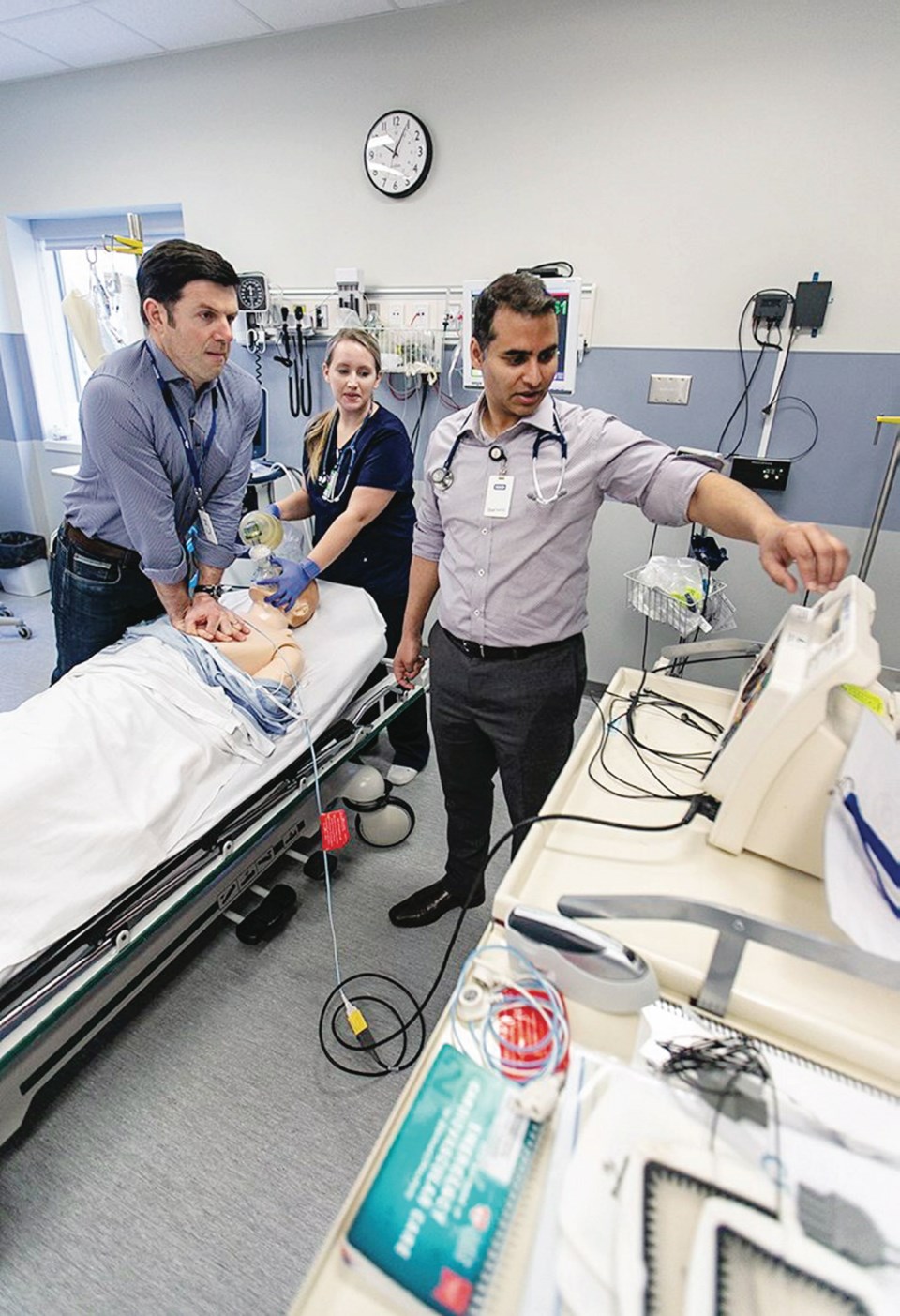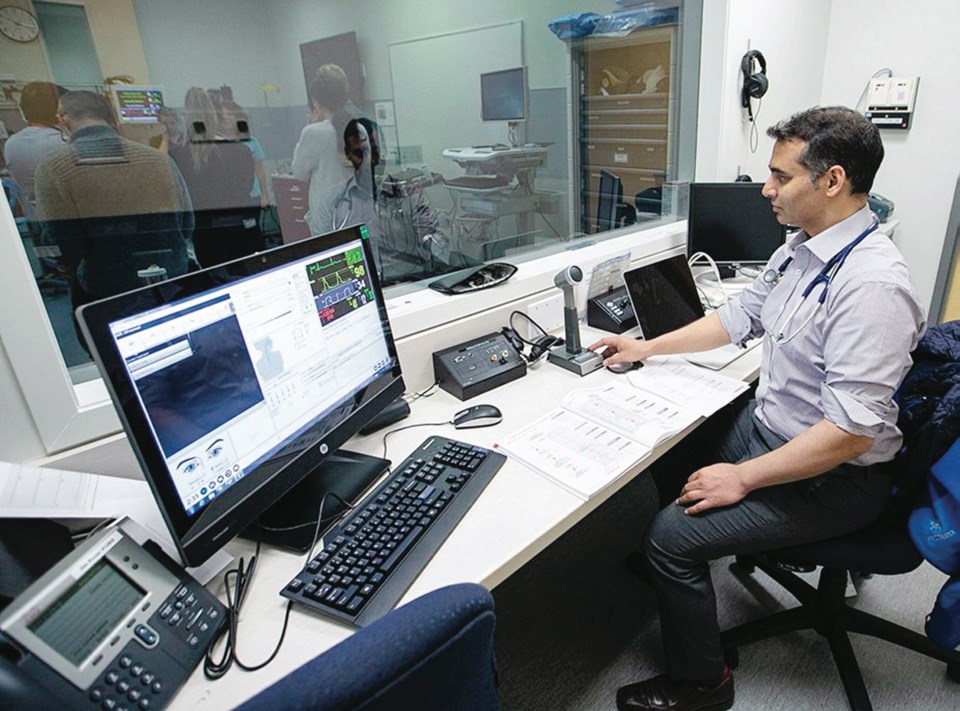This is one of a series of stories on the Victoria Hospitals Foundation’s campaign called You Are Vital.
Robert Bateman’s emergency flight from Salt Spring Island to Victoria General Hospital wasn’t all bad.
“A helicopter ride always has an element of ‘fun,’ ” quipped the internationally acclaimed artist, recalling his 2016 trip to Victoria for emergency treatment.
Once at Victoria General, he was in good hands.
“There they cauterized a bleeding ulcer and put a dam in an aneurysm to the liver to restrict the flow,” Bateman said. “And that seemed to fix the problem for a year and a half.”
He was back for more emergency treatment on March 26, 2018, after bringing up blood and hemorrhaging at 2:30 a.m. He again ended up in Royal Jubilee via Salt Spring’s Lady Minto Hospital, and was put on a different regimen of drugs, then hemorrhaged again April 4 and was back at Royal Jubilee.
Bateman said that this time, Dr. Shung Lee and Dr. Darren Biberdorf — with the help of a great medical team — “took the risk of operating on this 88-year-old body for six hours, solving the problem.”
The two repaired an area of his duodenum’s wall and put a sheath over his aneurysm.
Bateman had high praise for his treatment.

“The care was wonderful,” he said. “I felt that everyone from the ambulance drivers to doctors, nurses, lab technicians, physiotherapists, etc. was professional, friendly and caring.
“I am here today because of the care I received.”
He was released from hospital April 25.
“We both felt that everyone always did their best for him,” said Bateman’s wife, Birgit.
The Batemans — both artists, naturalists and retired high-school art teachers — live healthful, active lives. They have called Salt Spring home for 33 years and extol the benefits of being outdoors.
“Research has shown that spending time in nature has health benefits for the mind and body,” they said in a joint statement. “We encourage everyone to get out into nature as much as possible.”
Birgit said the care Robert has received has allowed him to get back to painting and to maintain physical activity.
“We’re still doing our two-kilometre walks each day, which I never thought was possible for a man of 88!”
They said the walks allow them “to notice what birds or plants are thriving around us.”
The Batemans have agreed to tell the story of Robert’s treatment as part of the Victoria Hospitals Foundation’s You Are Vital Campaign, which has a goal of raising $3.5 million by March to purchase more than 100 pieces of equipment for 11 key hospital areas, such as cardiac care and mental health.
Robert said it is important to support fundraising in the health field.
“I have high praise for our health-care system and particularly how the Victoria Hospitals Foundation works to gather funds for improving our medical-care facilities, as well as purchasing the latest equipment, which we know is terribly expensive.”
Birgit said Robert’s case was unusual.
“But you, too, may experience something so unusual that you’ll be grateful to be in one our hospitals, where the care, attention and knowledge is superb,” she said.

Dr. Omar Ahmad, head of emergency and critical-care medicine for Island Health, said new monitors would benefit cases such as Robert’s.
Ahmad praised the Batemans for continuing to do things that benefit their well-being.
“They’re definitely role models of a real focus on quality of life,” he said. “Certainly, they derive pleasure out of their walks.”
Ahmad said that upgrading monitoring systems will be a positive step.
“The new systems are going to be offering significant improvements over the old systems, and as we move forward into an interconnected hospital system, this will be one of the first steps that allows us to meet that goal.
“It’s all about early detection, early recognition of changes in vital signs.”
The new systems, which need about $2.4 million of the campaign funding, will be able to send potentially life-saving information to any monitor in any part of both the Royal Jubilee and Victoria General hospitals, Ahmad said.
Most patients who come to the hospitals will benefit. About 200,000 people from the Vancouver Island area are assessed annually at Royal Jubilee and Victoria General.
Ahmad pointed to the importance of monitors in a number of recent cases in the province where there have been carbon-monoxide exposures, including one in Port Hardy last week.
“These new monitors will be able to detect those levels, which is helpful, for sure,” he said, adding that the new equipment is more sensitive and more interconnected than what’s in place now.
Ahmad said the presence of carbon monoxide is often under-recognized.
“Early detection is very crucial for therapy,” he said. “If you can’t detect it easily, it often goes untreated.”
That can lead to long-term effects.
New monitors will be “a powerful part of the tools” that the Victoria Hospitals Foundation campaign provides, he said. A central monitor at various “hubs” in the hospital will display information from individual rooms, Ahmad said, “and then that will also be connected with patients as they leave the wards to go for imaging or for procedures.”
One factor in the need for new equipment is that technology changes and improves quickly, he said.
“The changes in any field are just so rapid it’s hard to keep up. We’re just trying to stay ahead of the curve.”
The equipment being sought has the capacity for upgrades, Ahmad said.
The old equipment works “but improvements can definitely be had,” he said. “They’re getting to the end of their lifespan, for sure.”
Donations can be made at victoriahf.ca/vital or by calling 250-519-1750.
The series
- Trip to doctor for 'cold' led to discovery of cancer in lung
- Putting moms and newborns first at Victoria General Hospital
- When the doctor becomes the patient
- Royal Jubilee lung tests prove a lifesaver for asthma sufferer
- Artist Robert Bateman takes hospital’s care to heart
- Heart attack a timely wake-up call



